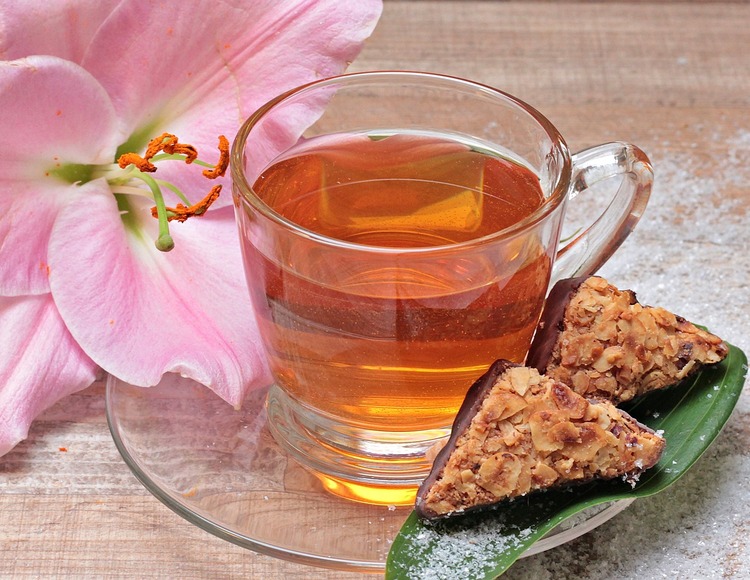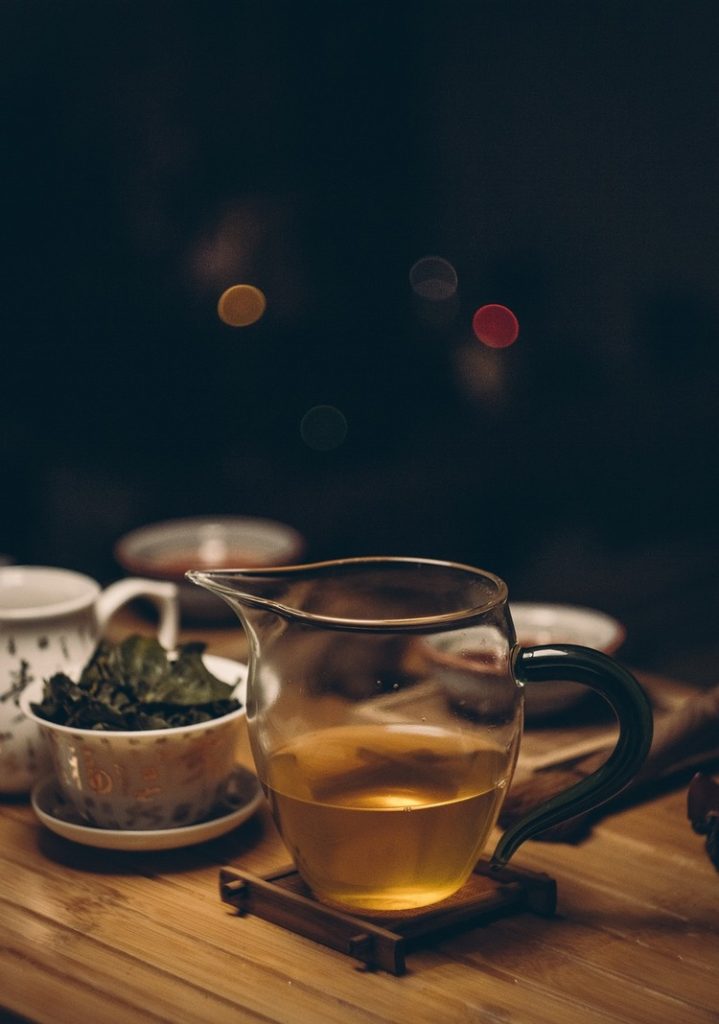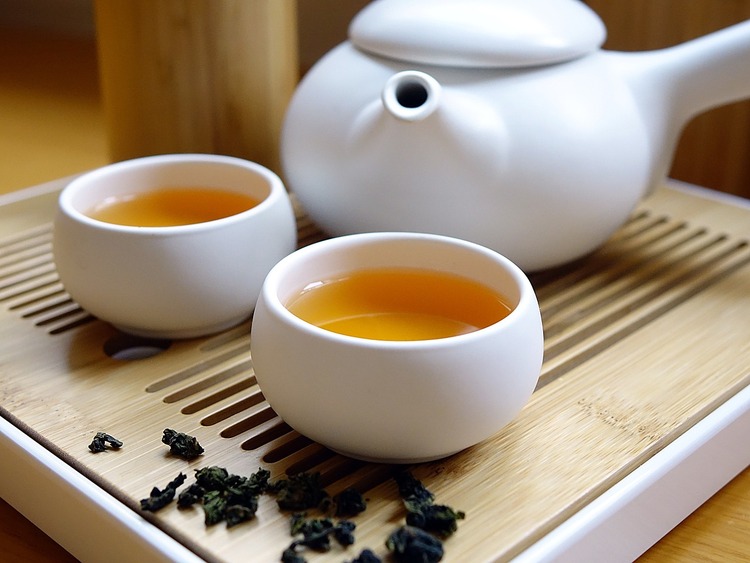Green Tea vs Oolong Tea. We discuss the difference here.
As you are aware, a variety of teas are available on the market. Two popular types of tea are green tea and oolong tea. Both teas have distinctive characteristics, but what are the differences?
Green tea is made from unoxidized tea leaves and is known for its fresh, grassy taste. It’s also packed with antioxidants and other beneficial compounds. On the other hand, oolong tea is partially oxidized and has a more complex flavor profile that ranges from floral to nutty.
If you want to learn more about the nuances distinguishing these two types of tea, keep reading since we have compiled a good amount of information about them.
Please note: This article contains affiliate links, meaning I may earn a commission if you make a purchase by clicking a link. Of course, this comes at no extra cost to you and helps me keep offering readers solid information.

Understanding Tea: An Overview
Tea is a popular beverage enjoyed by many people around the world. It is made from the leaves of the Camellia sinensis plant, native to China, India, and Southeast Asia. Tea is often called true tea to distinguish it from herbal teas made from various plants. These do not contain leaves from the Camellia sinensis plant.
There are several different types of true tea, including black tea, green tea, and oolong tea. Each type of tea is processed in a different way, which has a direct influence on the final product’s taste.
Black tea is the most common tea type known for its robust and bold flavor. It is made by fully oxidizing the leaves of the Camellia sinensis plant. India is well known for its black tea production (specifically Assam and Darjeeling regions). Kenya and China are big black tea exporters as well.
Green tea, on the other hand, is unoxidized. Once the Camellia sinensis plant leaves are harvested, oxidation is stopped by steaming or pan-firing. This process helps to preserve the natural antioxidants and nutrients, giving green tea a lighter, more delicate flavor. China and Japan’s green teas are famous worldwide.
Oolong tea is a partially oxidized tea that falls somewhere between black and green tea in terms of flavor and aroma. China and Taiwan are the leading oolong producers. Oolong tea is sometimes called Chinese tea.
Read More: The Process of Making Black Tea
The Tea Plant: Camellia Sinensis
Both green tea and oolong tea come from the same plant: Camellia Sinensis. This plant is native to East Asia and has been cultivated for centuries.
The leaves of the Camellia Sinensis plant are typically harvested by hand or machine and then processed in different ways to create different types of tea. They are typically harvested when young and tender, as these leaves are believed to have the best flavor and aroma.
One interesting fact about the tea plant is that it is an evergreen shrub. It can grow up to 30 feet tall if left unpruned but is typically kept at a much shorter height for easier.
Read More: The Process of Making Green Tea

The Process of Oxidation
When it comes to tea, oxidation plays a crucial role in determining the flavor and aroma of the final product.
Oxidation is the process by which tea leaves are exposed to oxygen, causing them to change color and flavor. You may hear sources referring to this process as fermentation. This is a misnomer since no bacteria or yeast are involved in the process (like in the case of beer or wine). In this section, we’ll examine the oxidation process and how it affects the taste and aroma of green tea and oolong tea.
Green tea is unoxidized, meaning the leaves are not exposed to oxygen during processing. Instead, the leaves are typically withered, fired (or steamed), and dried. This minimal processing results in a light and refreshing tea with a delicate flavor and aroma. Because green tea is not oxidized, it retains its natural green color and contains high levels of antioxidants.
Oolong tea is partially oxidized. The leaves are withered and then bruised (rolled, tossed, or shaken) to release the enzymes that cause oxidation. The leaves can then oxidize for a specific amount of time, depending on the desired flavor and aroma. Finally, the leaves are fired to stop oxidation. After firing, the leaves are dried. The oxidation level in oolong tea can vary widely, from just a few percent to as much as 80%.
The oxidation level in oolong tea gives it its complex flavor and aroma. Lightly oxidized oolongs tend to have a floral, fruity flavor, while heavily oxidized oolongs have a more robust, earthy flavor. The color of the leaves can also vary depending on the oxidation level, ranging from green to brown.
Green Tea vs Oolong Tea: Comparison
Alright, after getting to understand tea better, we have arrived at the heart of the article. Here is a detailed green tea vs oolong tea comparison:
- Flavor: Green tea has a subtle, fresh, and grassy flavor, while oolong tea has a more complex flavor profile that can include notes of fruit, flowers, and nuts. Oolong tea is also known for its lingering aftertaste.
- Color: Green tea is typically light green or yellow, while oolong tea can range from light golden to darker amber.
- Aroma: Green tea has a fresh, vegetal aroma, while oolong tea has floral, nutty, smoky, or fruity notes.
- Caffeine content: Green tea has a lower caffeine content than oolong tea, making it a good choice for those sensitive to caffeine.
- Processing: Green tea is unoxidized, while oolong tea is partially oxidized, giving it a unique flavor profile. In addition, oolong tea can be roasted and aged as part of its processing or post-processing. These steps are less commonly applied to green teas (there are exceptions, of course).
- Brewing: Green tea is typically brewed with water at temperatures around 160-180°F (70-82°C) for 1-3 minutes. Oolong tea is best brewed with water at temperatures around 185-205°F (85-96°C) for 2-5 minutes.
- Number of infusions: Even though there is no consensus, the leaves of high-quality green tea can be steeped 2 or 3 times. The leaves of high-quality oolong tea can be steeped 4 to 6 times (if using a small teapot or Gongfu method).

Green Tea vs Oolong Tea: Health Benefits
Regarding health benefits, green tea and oolong tea have much to offer. Here are some of the benefits you can expect from drinking these teas:
Antioxidants and Polyphenols
Both teas are rich in antioxidants and polyphenols, which are known to help fight free radicals in the body. Free radicals are unstable molecules that can damage cells and contribute to the development of chronic diseases.
Weight Management
Both teas are known to help with weight management. They contain catechins and EGCG, which have been shown to increase fat oxidation and boost metabolism. This means drinking these teas may help you burn more calories and lose weight.
Heart Health
Drinking green and oolong tea may help improve heart health by reducing the risk of heart disease. They have been shown to lower cholesterol levels and blood pressure, both risk factors for heart disease.
Cancer Prevention
Studies have shown that green tea and oolong tea may help prevent certain types of cancer, including breast, lung, and ovarian cancer. This is due to their high levels of antioxidants and polyphenols, which help protect cells from oxidative stress.
Dental Health
Both teas may also help improve dental health by reducing the risk of cavities and gum disease. This is due to their ability to kill bacteria in the mouth and reduce inflammation.
Brewing Process
Brewing a perfect cup of tea can be a delightful experience, and it all starts with the right ingredients. Whether you prefer, using high-quality loose-leaf tea is essential to get the best flavor and aroma.
To brew your tea, start by heating water to the right temperature. Green tea should be brewed at a lower temperature, around 176°F (80°C), while oolong tea requires slightly hotter water, around 194°F (90°C). You can use a thermometer or bring the water to a boil and let it cool for a few minutes.
Next, measure out the right amount of tea leaves. For a single cup, use one teaspoon of tea leaves for green tea and two teaspoons for oolong tea. You can adjust the amount depending on your taste preference.
Place the tea leaves in a tea infuser or strainer and pour the hot water over them. Let the tea steep for 2-3 minutes for green tea and 3-5 minutes for oolong tea. Avoid overstepping, as it can make the tea taste bitter.
Once the tea is brewed, you can enjoy it as it is or add sweeteners like honey or sugar. I would avoid adding milk as it can overpower the flavors.
Please note that the brewing method described above is called the “Western Style” or “Grandpa Style.” For the best results, brew green tea in a covered cup or gaiwan. It is best to use a small teapot (Yixing teapot) for oolong tea. We explain how to brew in a small teapot in our oolong tea articles.
Buying Recommendations
A great place to buy this tea is at specialty tea shops. These shops often carry a wide variety of tea blends. You can find loose-leaf tea or tea bags, depending on your preference. Specialty tea shops are also the place to ask questions and get recommendations from knowledgeable staff members who can help you find products according to your preferences and budget.
If visiting a specialty tea shop is not viable, you can look for reputable online tea shops or retailers. You can also read reviews from other customers to get an idea of the quality of the tea and the seller’s reliability.
If you are interested in buying online, please consider the recommendations below.
Green Tea leaves Sencha, JAS Certified Organic, Japanese Tea


FullChea – Longjing Tea – Dragonwell Tea – Chinese Green Tea Loose Leaf


Premium Fujian Wuyi Da Hong Pao

Yan Hou Tang Jin Xuan Milk Oolong Tea


Frequently Asked Questions
Which tea has more caffeine, green tea or oolong tea?
In general, green tea has a lower caffeine content than oolong tea. However, the caffeine content can vary depending on the type of tea and how it is brewed. For specifics, you should refer to the product labels.
What are the health benefits of oolong tea?
Oolong tea is known for its numerous health benefits. It contains antioxidants to help prevent cell damage and reduce the risk of chronic diseases such as heart disease, diabetes, and cancer. Oolong tea has also improved brain function, aids digestion, and promotes weight loss.
What are the differences between oolong tea and green tea?
Oolong and green tea come from the same plant, Camellia sinensis, but they are processed differently. Oolong tea is partially oxidized, while green tea is not. This gives oolong tea a flavor profile that is different from green tea. Oolong tea is also richer in antioxidants called theaflavins and thearubigins, while green tea contains more catechins.
Which tea is better for relaxation, oolong or green tea?
Both oolong and green tea can be relaxing due to their theanine content, an amino acid that promotes relaxation and reduces stress. However, green tea may be more effective in promoting relaxation due to its lower caffeine content. However, the caffeine content can vary depending on the type of tea and how it is brewed.

I hope you have enjoyed the article and learned something new! See you later!
Green tea vs oolong tea, which one do you prefer?
More About Tea
What Does Green Tea Taste Like?
The Process of Making Green Tea